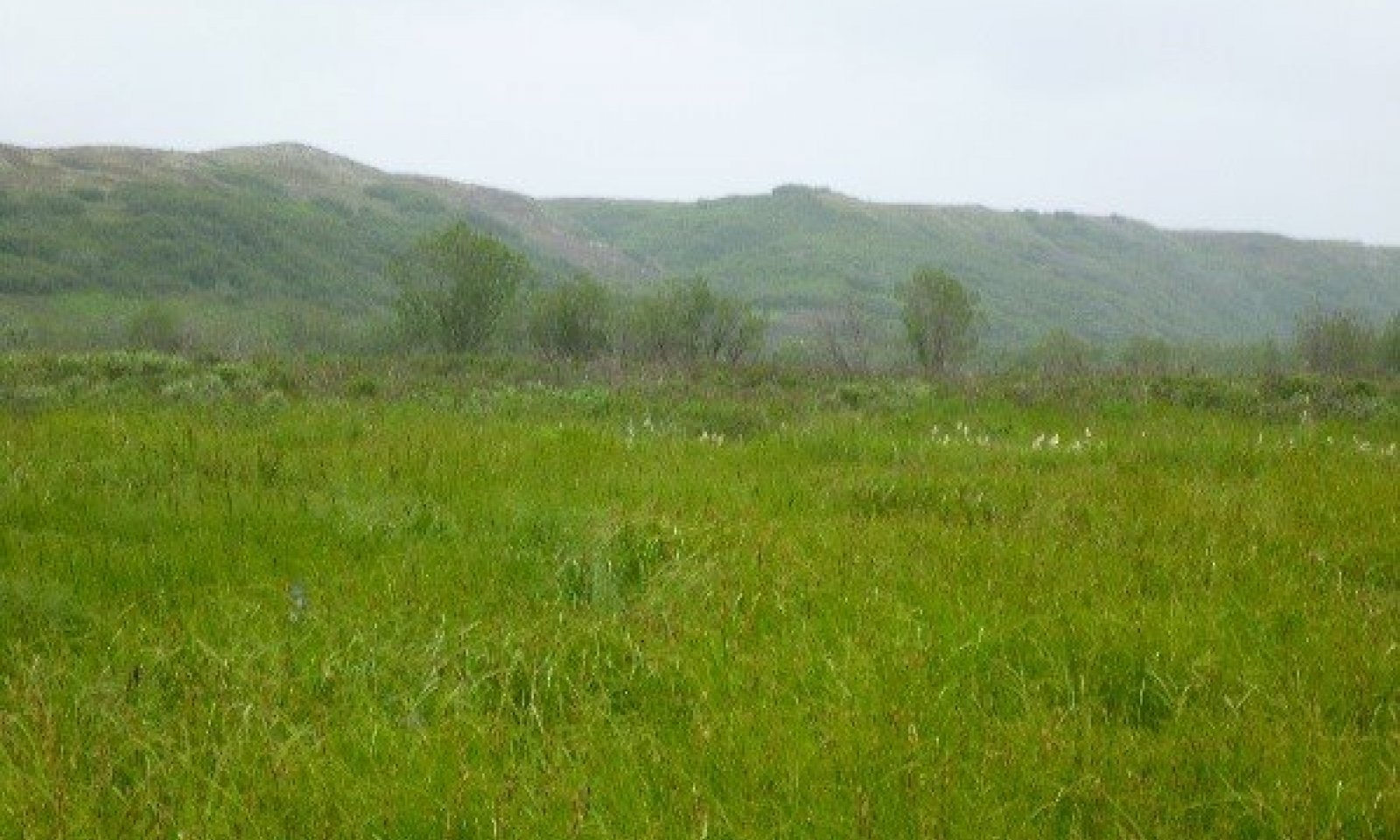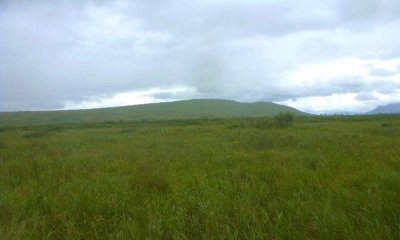
Western Alaska Maritime Grassland Peat Flood Plains, Depression
Scenario model
Current ecosystem state
Select a state
Management practices/drivers
Select a transition or restoration pathway
-
Transition T1A
Beaver dam construction
More details -
Restoration pathway R2A
Hypothetical dam removal
More details -
No transition or restoration pathway between the selected states has been described
Target ecosystem state
Select a state
State 1
Reference State



Description
The reference state supports one community phase that is distinguished by the developed structure and dominance of the vegetation and the ecological function and stability of the community (fig. 5). The reference community phase is a grassland meadow consisting of hydrophilic graminoids and forbs.
This report provides baseline vegetation inventory data. Future data collection is needed to provide further information about existing plant communities. Common and scientific names are from the USDA PLANTS database. Community phases are characterized by the Alaska Vegetation Classification System (Viereck et al., 1992).
Submodel
State 2
Beaver-Affected State



Description
This alternate state is the result of beaver activity. Although the depressions typically do not contain flowing water, beavers can use the ponded areas to build dams and lodges (fig. 2), which increases the scale, duration, and depth of ponding. Beavers (Castor canadensis) directly kill shrubs for food and dam material and indirectly kill these species and others by raising the water table (USDA-Forest Service, 2013). Beavers shift the soil material (pond sediment versus alluvium), which can result in spatial and temporal changes in willow establishment and affect the structure of the plant community (Wolf et al., 2007).
Changes in the soils and the depth and duration of ponding create a community distinct from the reference plant community. This community typically is around or upstream from beaver ponds in areas where the most ponding occurs. The number and density of wetland species is highest in these areas, which can affect the availability of forage plants for other animal species. No data is available from this region as to whether the plant community will revert to the reference plant community if the dams are removed and no further management is applied.
Browsing or grazing by other animals was not evident in this community.
Submodel
Mechanism
This transition is caused by the construction of dams by beavers. Areas surrounding beaver ponds support plant assemblages distinct from those of the reference state. This plant community is comprised of species that can grow and reproduce in wet soils. The time required for this transition to occur depends on the amount of activity by beavers.
Mechanism
Currently, it is unknown whether an area will return to the reference state when a beaver dam is removed. The duration of the dam and the affect on the hydrology of the area may determine whether this process can occur naturally or would require additional management. More observation is needed to determine the effects of dam removal on the plant community.
Model keys
Briefcase
Add ecological sites and Major Land Resource Areas to your briefcase by clicking on the briefcase (![]() ) icon wherever it occurs. Drag and drop items to reorder. Cookies are used to store briefcase items between browsing sessions. Because of this, the number of items that can be added to your briefcase is limited, and briefcase items added on one device and browser cannot be accessed from another device or browser. Users who do not wish to place cookies on their devices should not use the briefcase tool. Briefcase cookies serve no other purpose than described here and are deleted whenever browsing history is cleared.
) icon wherever it occurs. Drag and drop items to reorder. Cookies are used to store briefcase items between browsing sessions. Because of this, the number of items that can be added to your briefcase is limited, and briefcase items added on one device and browser cannot be accessed from another device or browser. Users who do not wish to place cookies on their devices should not use the briefcase tool. Briefcase cookies serve no other purpose than described here and are deleted whenever browsing history is cleared.
Ecological sites
Major Land Resource Areas
The Ecosystem Dynamics Interpretive Tool is an information system framework developed by the USDA-ARS Jornada Experimental Range, USDA Natural Resources Conservation Service, and New Mexico State University.

